-
About
- About Listly
- Community & Support
- Howto
- Chrome Extension
- Bookmarklet
- WordPress Plugin
- Listly Premium
- Privacy
- Terms
- DMCA Copyright
- © 2010-2024 Boomy Labs
 Thomas Robbins
Thomas Robbins
Listly by Thomas Robbins
Any digital game (mobile, desktop, or console) designed to allow ongoing, post-launch updates of content, design elements, or player interactions over the life of the game; particularly games with the ability to manage some or all of these elements server-side without the need to update a player's game client.
By contrast, Static Games are built and shipped as a permanent client with no ongoing updates, tuning, or content releases over time. Games with so-called "On Disk DLC" still qualify as Static since there is no live operational effort needed to distribute this additional content.
Live Game Operations is the practice of managing maintaining, and running business operations of a live game post-launch. This includes activities such as ongoing acquisition activity, monetization design and analysis, player lifecycle management, communication design, user segmenting, business intelligence, server maintenance, payment processing, community management, customer support, content development, testing and optimization of content, messaging, pricing, etc.
Source: http://www.playfab.com
Are you ready for live game operations?
Ten years ago, most games were sold as essentially packaged goods: Once a game was shipped, it was out of a studio’s hands. Players either bought the game or they didn’t. The rise of the Internet, mobile, and free-to-play have changed all that. Now, games of all kinds and types use continuous updates and promotions to engage players for the long term using live game operations. This evolution in games mirrors the similar evolution of software-as-a-service, leading to the term “games-as-a-service.” Across all platforms, live games accounted for $24 billion in revenue in 2014, or about 30% of the industry’s total. By 2020, it’s estimated that 80% of the games industry will have moved to games- as-a-service. The top games studios are masters at live game operations, often using complicated in-house technology. But the ideas behind live game operations are easy to understand.
This paper outlines the fundamental components you need to understand for live game operations:
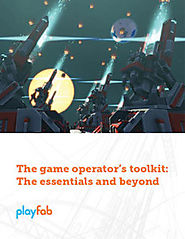
*Game operators don't just need great strategies, they need great tools. *
A tale of two game operators: Meet Grace and Gary. Gary runs game operations for The Cheerful Unicorn, while Grace works on The Very Sad Penguin. A month after launch, they each get the same request from their managers: “Our business guys say we’re below our targets. Can you get our whales to spend 30% more?”
Grace spends several days running SQL queries and goes back to her manager with a plan to raise revenue. It will take 20 hours of dev time and go out in the next game update, 6 weeks later. Gary spends two hours looking at data on his game operations dashboard, then starts implementing his plan immediately. He tells his manager he should have results within a day or two.
The difference here is not that Grace is bad at her job and Gary is good at his; it’s that Gary has the better toolset. All the data he needs to run his game is at his fingertips, and he can make changes to the game without needing engineering resources.
Learn about the four essential tools for game operations in this white paper.
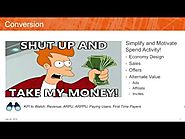
Your game is awesome; you need a post-launch strategy that’s equally awesome. Learn the 5 key things you need to plan for to help your game get to the top of the charts and stay there, without throwing a ton of money away on user acquisition. Come prepared with questions and get advice on your game from game operations guru Scott Willoughby, former digital strategy expert for Wizards of the Coast and PopCap.

At PlayFab we’re focused on live games. The question we often get asked is what are they and how are they different? Let’s start with a definition. A live game is any digital game (mobile, desktop, or console) designed to allow ongoing, post-launch updates of content, design elements, or player interactions over the life of the game; particularly games with the ability to manage some or all of these elements server-side without the need to update a player's game client. By contrast, static games are built and shipped as a permanent client with no ongoing updates, tuning, or content releases over time. Games with so-called "On Disk DLC" still qualify as static since there is no live operational effort needed to distribute this additional content.
That leads to live game operations (LGO) and our main focus area. This is the practice of managing maintaining, and running business operations of a live game post-launch. This includes activities such as ongoing acquisition activity, monetization design and analysis, player lifecycle management, communication design, user segmenting, business intelligence, server maintenance, payment processing, community management, customer support, content development, testing and optimization of content, messaging, pricing, etc.

Have questions about user attribution tracking? In this video join us as we do a quick white board session to dive into how this works in the mobile gaming space. We cover the basics so that you can understand how you can tell when a user clicks your ad. Ultimately, helping you understand how you can make an effective marketing spend.

Have questions best practices for running events or competitions within your game? In this white board session we dive into how to use these to drive engagement and spending with your game. Watch this video to understand the basics of audience, incentive, and action..

Game development has changed. The days of simply launching a game is over. Launch day is just the beginning Successful games grow players and build retentions with leaderboards, promotions, new content and targeted offers.There are so many aspects to managing a successful live game. In this video we look at what is live operations and how PlayFab is built to solve this problem.

What’s the best time to ask your player for additional permission like messaging or to purchase a new item? It turns out there is a psychological term called the peak-end rule which can help when making this decision. Basically, it says people judge experiences on how they were at their peak (the most intense point) and at the end.
According to the theory information other than the peak and end of the experience is not lost, but it is not used.
For gaming this has some interesting implications. Maybe it’s not the best time to ask for push messaging permissions when a player has lost the same level five times. In this video we take a look at this theory and provide some practical best practices of how it can be used.
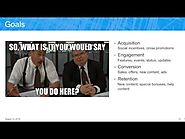
A great game is only the first step to ongoing player engagement and - ultimately - success; you need to communicate with your players to keep them involved, motivated, and monetizing. Learn about the best communication channels for player engagement and how to use them effectively. Come prepared with questions and get advice on your game from game operations guru Scott Willoughby, former digital strategy expert for Wizards of the Coast and PopCap.

We talk to a lot of developers building live service games here at PlayFab and one of the biggest challenges they face is ensuring that their backend server infrastructure can handle their anticipated user load. While we pride ourselves on our ultra-reliable backend solutions capable of handling tens of millions of users, what do we (and our customers) mean by that: daily users, monthly users, sessions, concurrent users? Which metric matters?

It’s easy to look at the failure rate of free-to-play games and panic. You know that having a live operations strategy will help your game avoid that fate, but where do you start?

Improved mobile hardware, increased storage, and faster data networks allow developers to make advanced, beautiful, expansive games for pocket-sized devices. But small screens don’t mean small downloads, and some of today’s mobile games get BIG. While that’s not usually a problem for Wi-Fi connected players, it can cost you dearly when it comes to players who want to download your game over cellular data.
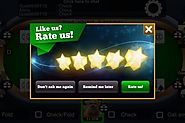
App Store Optimization (ASO) is still a nascent field, and a lot of the strategy around keyword stuffing and title manipulation feels like SEO from 10 years ago. While the weight and importance of keywords (other than title) may shift over time, there are two other factors that will likely carry weight in perpetuity: install volume and app ratings.

Push notifications are arguably the most powerful marketing tool available right now to mobile game developers. Those little home screen alerts (as in the ones above from Diver Dogs, which uses One Signal) allow you to have a one-to-one relationship with your best customers on the most competitive, valuable marketing real estate on the planet: the mobile device home screen.
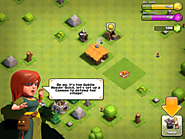
The first 30 seconds of your mobile game can make the difference between a best-seller and a flop. Bore or irritate your users with complicated login prompts and they’re gone. Fail to track any player information, and you might as well be flying blind. Making a great first impression is key to any successful live game.

Live game operations is the practice of managing maintaining, and running business operations of a live game post-launch. This includes activities such as ongoing acquisition activity, monetization design and analysis, player lifecycle management, communication design, user segmenting, business intelligence, server maintenance, payment processing, community management, customer support, content development, testing and optimization of content, messaging, pricing, etc.
Download the Getting started with live game operations e-book to learn the basics of live game operations success. It covers the three core pillars of live game operations success:
User acquisition
User engagement
Monetization

The GAMESbrief free-to-play games spreadsheet is a simple but powerful way of maximising revenue from an online game. This forecasting tool monitors six key metrics to identify what obstacles are holding your game back.

Description of my talk from GDC Next ’13 – Designing in-game purchases:
In-game purchases are here to stay. Now more than ever it is clear that players are comfortable spending money in browser, mobile, and download games. But just because players are willing to pay does not mean game developers know how to give them something worth buying. This talk gives practical, hands-on guidelines and processes for designing your game’s monetization. Core loops, feature design, economy design, user interface tips, user experience flows, and forecasting tools are all covered in this actionable talk from a 11 year design veteran who has successfully made the leap from designing paid games to freemium games.
This monthly forecast template asks you to create a series of forecasts for your game at various levels of investment and success. By creating multiple forecasts you can get a much better feel for the business opportunity of your game.
In my opinion, forecasts are a tool that help you tell a story about your game. Therefore, the most important part of this forecast template is the Justification column that asks you to explain why the numbers will change as you predict.

At the outset of a project, I suggest writing a Game Treatment. Without going into a full design document, this 5 to 7 page document will help you communicate the core vision of your game without going too far into the weeds.
Focused on F2P games, this treatment asks you to think about a number of topics that are critical to your game’s long term success in the market. In addition to key features, the template forces you to answer questions about the player journey over time, acquisition and monetization strategy, live development strategy, aesthetic design and project risks.

After completing your Game Treatment template, this short Monetization Strategy template asks you to go into detail on your game’s monetization emotions, engagement loops and product catalog.

The PlayFab Live Game Ops Academy is the place to learn the key concepts for success with your live game operations. We know that operating a live game is hard, and there’s a huge gap in performance between the top-grossing game developers and everyone else. The Live Game Ops Academy is designed to help teach the skills that you need to close this gap.
An effective user acquisition strategy is the holy grail of live game operations. Whether it’s a mix of channels to generate a constant flow of new users at a sustainable cost or a clever tactic that gives your new game a boost in a short period of time, acquiring players is necessary to make games successful. This webinar covers the basic concepts of user acquisition.
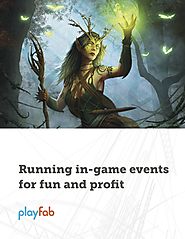
From a player’s point of view, in-game events serve much the same purpose that real-life events do: They’re a way to try new experiences or go to new places, or just a way to do something cool that you tell your friends about later. From a game operator’s point of view, live game events are one of the most important tools to manage the game. Events can be used to launch new content, boost engagement, fix an unbalanced economy, or test revenue strategies on different segments.
In this paper, you'll learn about:

The best game in the world will still fail if no one plays it. Getting players to try your game is still one of the biggest hurdles faced by all game studios and publishers. For smaller studios and indies in particular, the costs associated with paid user acquisition may seem impossibly high. Even games with bigger budgets worry about whether they are overspending to acquire low-value players.
Broadly speaking, there are three parts to any user acquisition (UA) strategy:

Live game ops academy is the place to learn the key concepts for success with your live game operations. We know that operating a live game is hard, and there’s a huge gap in performance between the top-grossing game developers and everyone else. The Live game ops academy is designed to help teach the skills that you need to close this gap.
If there is one word that can bring chills to many game developers, its monetization. Sadly, making money from games used to be so much simpler. You attach a reasonable price, make the game available, and away you go. Nowadays you have to consider which parts of your game are going to make money, whether you're nudging consumers in the right direction, whether you're balancing the money grabbing with enough fun to keep the players engaged - and that even before your game is on sale! Join this webinar to learn the basics of monetization for your game.
